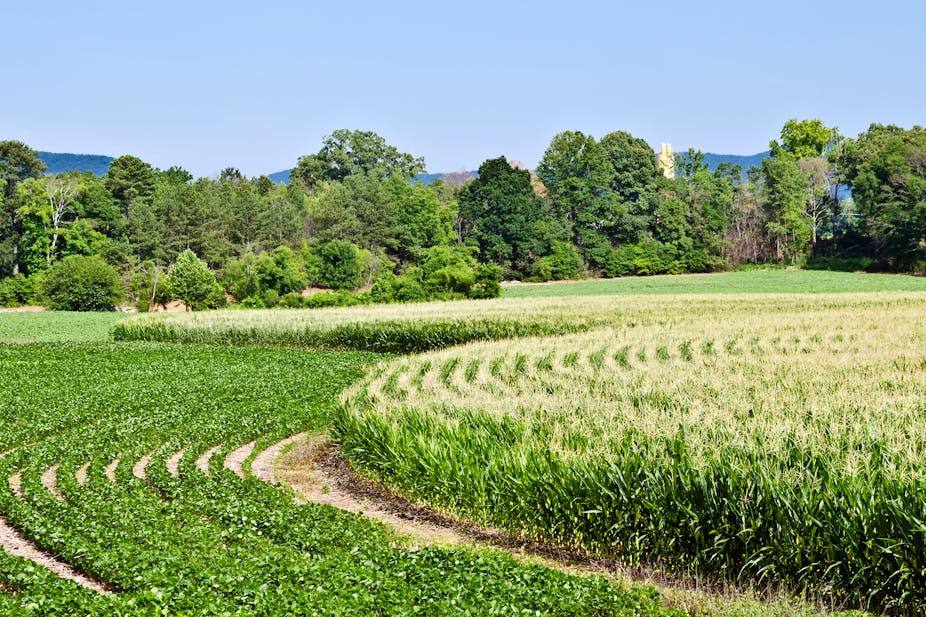Ever since the 1973 oil embargo, U.S. energy policy has sought to replace petroleum-based transportation fuels with alternatives. One prominent option is using biofuels, such as ethanol in place of gasoline and biodiesel instead of ordinary diesel.
Transportation generates one-fourth of U.S. greenhouse gas emissions, so addressing this sector’s impact is crucial for climate protection.
Many scientists view biofuels as inherently carbon-neutral: they assume the carbon dioxide (CO2) plants absorb from the air as they grow completely offsets, or “neutralizes,” the CO2 emitted when fuels made from plants burn. Many years of computer modeling based on this assumption, including work supported by the U.S. Department of Energy, concluded that using biofuels to replace gasoline significantly reduced CO2 emissions from transportation.
Our new study takes a fresh look at this question. We examined crop data to evaluate whether enough CO2 was absorbed on farmland to balance out the CO2 emitted when biofuels are burned. It turns out that once all the emissions associated with growing feedstock crops and manufacturing biofuel are factored in, biofuels actually increase CO2 emissions rather than reducing them.
Biofuel boom, climate blunder
Federal and state policies have subsidized corn ethanol since the 1970s, but biofuels gained support as a tool for promoting energy independence and reducing oil imports after the September 11, 2001 attacks. In 2005 Congress enacted the Renewable Fuel Standard, which required fuel refiners to blend 7.5 billion gallons of ethanol into gasoline by 2012. (For comparison, in that year Americans used 133 billion gallons of gasoline.)
In 2007 Congress dramatically expanded the RFS program with support from some major environmental groups. The new standard more than tripled annual U.S. renewable fuel consumption, which rose from 4.1 billion gallons in 2005 to 15.4 billion gallons in 2015.
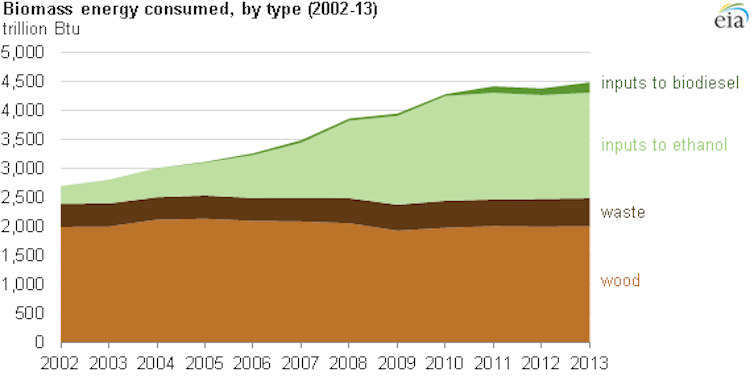
Our study examined data from 2005-2013 during this sharp increase in renewable fuel use. Rather than assuming that producing and using biofuels was carbon-neutral, we explicitly compared the amount of CO2 absorbed on cropland to the quantity emitted during biofuel production and consumption.
Existing crop growth already takes large amounts of CO2 out of the atmosphere. The empirical question is whether biofuel production increases the rate of CO2 uptake enough to fully offset CO2 emissions produced when corn is fermented into ethanol and when biofuels are burned.
Most of the crops that went into biofuels during this period were already being cultivated; the main change was that farmers sold more of their harvest to biofuel makers and less for food and animal feed. Some farmers expanded corn and soybean production or switched to these commodities from less profitable crops.
But as long as growing conditions remain constant, corn plants take CO2 out of the atmosphere at the same rate regardless of how the corn is used. Therefore, to properly evaluate biofuels, one must evaluate CO2 uptake on all cropland. After all, crop growth is the CO2 “sponge” that takes carbon out of the atmosphere.
When we performed such an evaluation, we found that from 2005 through 2013, cumulative carbon uptake on U.S. farmland increased by 49 teragrams (a teragram is one million metric tons). Planted areas of most other field crops declined during this period, so this increased CO2 uptake can be largely attributed to crops grown for biofuels.
Over the same period, however, CO2 emissions from fermenting and burning biofuels increased by 132 teragrams. Therefore, the greater carbon uptake associated with crop growth offset only 37 percent of biofuel-related CO2 emissions from 2005 through 2013. In other words, biofuels are far from inherently carbon-neutral.
Carbon flows and the ‘climate bathtub’
This result contradicts most established work on biofuels. To understand why, it is helpful to think of the atmosphere as a bathtub that is filled with CO2 instead of water.
Many activities on Earth add CO2 to the atmosphere, like water flowing from a faucet into the tub. The largest source is respiration: Carbon is the fuel of life, and all living things “burn carbs” to power their metabolisms. Burning ethanol, gasoline or any other carbon-based fuel opens up the CO2 “faucet” further and adds carbon to the atmosphere faster than natural metabolic processes.
Other activities remove CO2 from the atmosphere, like water flowing out of a tub. Before the industrial era, plant growth absorbed more than enough CO2 to offset the CO2 that plants and animals respired into the atmosphere.
Today, however, largely through fossil fuel use, we are adding CO2 to the atmosphere far more rapidly than nature removes it. As a result, the CO2 “water level” is rapidly rising in the climate bathtub.
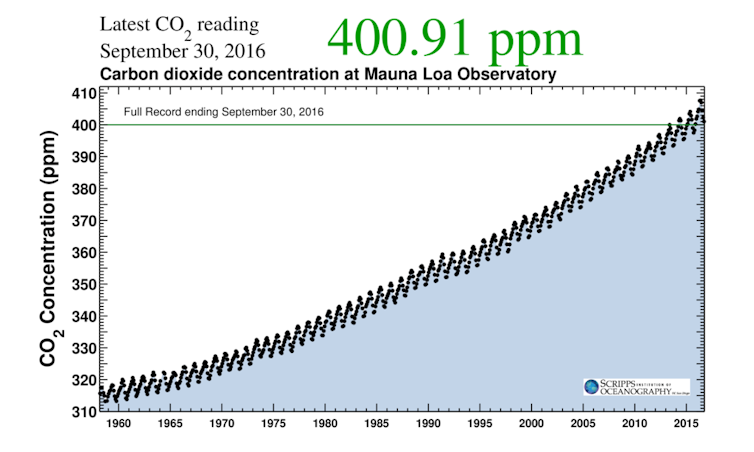
When biofuels are burned, they emit roughly the same the amount of CO2 per unit of energy as petroleum fuels. Therefore, using biofuels instead of fossil fuels does not change how quickly CO2 flows into the climate bathtub. To reduce the buildup of atmospheric CO2 levels, biofuel production must open up the CO2 drain – that is, it must speed up the net rate at which carbon is removed from the atmosphere.
Growing more corn and soybeans has opened the CO2 uptake “drain” a bit more, mostly by displacing other crops. That’s especially true for corn, whose high yields remove carbon from the atmosphere at a rate of two tons per acre, faster than most other crops.
Nevertheless, expanding production of corn and soybeans for biofuels increased CO2 uptake only enough to offset 37 percent of the CO2 directly tied to biofuel use. Moreover, it was far from enough to offset other GHG emissions during biofuel production from sources including fertilizer use, farm operations and fuel refining. Additionally, when farmers convert grasslands, wetlands and other habitats that store large quantities of carbon into cropland, very large CO2 releases occur.
Mistaken modeling
Our new study has sparked controversy because it contradicts many prior analyses. These studies used an approach called lifecycle analysis, or LCA, in which analysts add up all of the GHG emissions associated with producing and using a product. The result is popularly called the product’s “carbon footprint.”
The LCA studies used to justify and administer renewable fuel policies evaluate only emissions – that is, the CO2 flowing into the air – and failed to assess whether biofuel production increased the rate at which croplands removed CO2 from the atmosphere. Instead, LCA simply assumes that because energy crops such as corn and soybeans can be regrown from one year to the next, they automatically remove as much carbon from the atmosphere as they release during biofuel combustion. This significant assumption is hard-coded into LCA computer models.
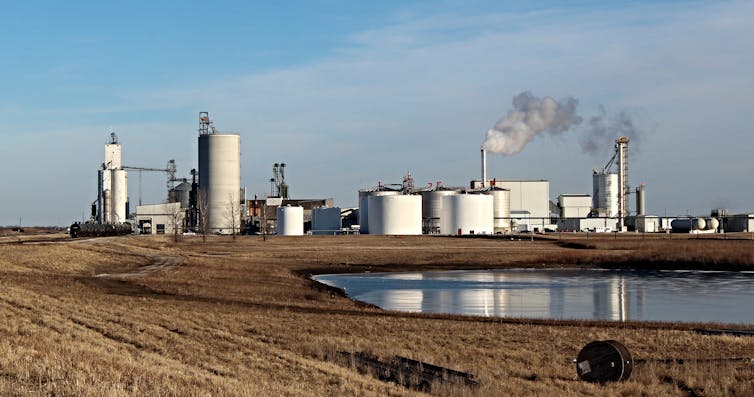
Unfortunately, LCA is the basis for the RFS as well as California’s Low-Carbon Fuel Standard, a key element of that state’s ambitious climate action plan. It is also used by other agencies, research institutions and businesses with an interest in transportation fuels.
I once accepted the view that biofuels were inherently carbon-neutral. Twenty years ago I was lead author of the first paper proposing use of LCA for fuel policy. Many such studies were done, and a widely cited meta-analysis published in Science in 2006 found that using corn ethanol significantly reduced GHG emissions compared to petroleum gasoline.
However, other scholars raised concerns about how planting vast areas with energy crops could alter land use. In early 2008 Science published two notable articles. One described how biofuel crops directly displaced carbon-rich habitats, such as grasslands. The other showed that growing crops for biofuel triggered damaging indirect effects, such as deforestation, as farmers competed for productive land.
LCA adherents made their models more complex to account for these consequences of fuel production. But the resulting uncertainties grew so large that it became impossible to determine whether or not biofuels were helping the climate. In 2011 a National Research Council report on the RFS concluded that crop-based biofuels such as corn ethanol “have not been conclusively shown to reduce GHG emissions and might actually increase them.”
These uncertainties spurred me to start deconstructing LCA. In 2013, I published a paper in Climatic Change showing that the conditions under which biofuel production could offset CO2 were much more limited than commonly assumed. In a subsequent review paper I detailed the mistakes made when using LCA to evaluate biofuels. These studies paved the way for our new finding that in the United States, to date, renewable fuels actually are more harmful to the climate than gasoline.
It is still urgent to mitigate CO2 from oil, which is the largest source of anthropogenic CO2 emissions in the United States and the second-largest globally after coal. But our analysis affirms that, as a cure for climate change, biofuels are “worse than the disease.”
Reduce and remove
Science points the way to climate protection mechanisms that are more effective and less costly than biofuels. There are two broad strategies for mitigating CO2 emissions from transportation fuels. First, we can reduce emissions by improving vehicle efficiency, limiting miles traveled or substituting truly carbon-free fuels such as electricity or hydrogen.
Second, we can remove CO2 from the atmosphere more rapidly than ecosystems are absorbing it now. Strategies for “recarbonizing the biosphere” include reforestation and afforestation, rebuilding soil carbon and restoring other carbon-rich ecosystems such as wetlands and grasslands.
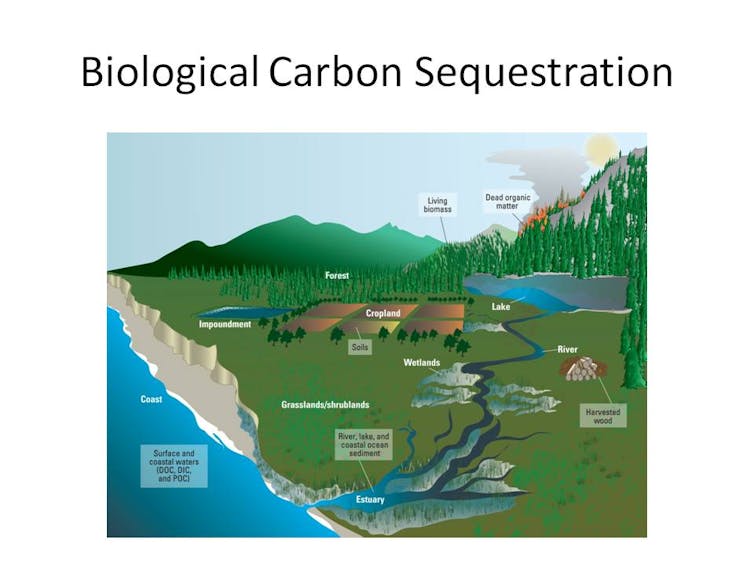
These approaches will help to protect biodiversity – another global sustainability challenge – instead of threatening it as biofuel production does. Our analysis also offers another insight: Once carbon has been removed from the air, it rarely makes sense to expend energy and emissions to process it into biofuels only to burn the carbon and re-release it into the atmosphere.

